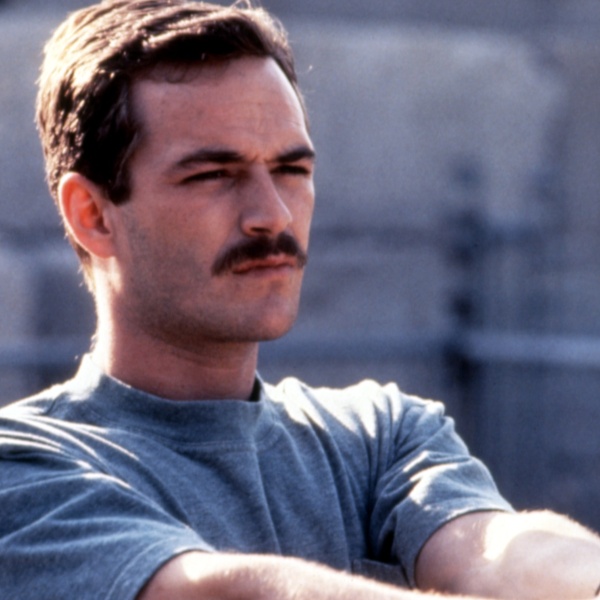
One of the “charmingly neurotic” tics of the main character of “I Don’t Know How She Does It,” played brittlely and with affected strain by Sarah Jessica Parker, is making to-do lists. Since the year is 2011 and editing software has come a long way, we see her visualize the list as the prepares for sleep – everything from arranging her daughter’s play date to doing some Kegel exercises (yes, seriously) – with words and small images appearing tattooed on the ceiling of her bohemian chic Boston apartment (accompanied by a never-ending stream of voice-over narration). While watching “I Don’t Know How She Does It,” which at a swift 89 minutes still feels longer than the “Three Colors” trilogy combined, you’ll be tempted to make a similar mental inventory of things that you could (and should),instead of watching this wretched claptrap, which we’re fairly certain has single-handedly set the feminist cause back a good 35-40 years.
Parker plays Kate Reddy, a perpetually frazzled financial analyst (there’s an ongoing joke about the vagueness of her position, but for the record we would love to know what she actually does), who is married to a middling architect Richard (Greg Kinnear, looking concerned) and has a pair of adorable children. She’s on the cusp of a big assignment at the firm and is teetering on a systemic breakdown of her familial unit (Richard has also landed a big work gig). To make matters worse, she’s hassled by her boss (Kelsey Grammer) and smarmy coworker (Seth Meyers), and gets into a sticky, potentially romantic situation with her new client (Pierce Brosnan). Oh, and she has a pair of you-go-girl besties – Christina Hendricks as a single mother and lawyer, and geek icon Olivia Munn, her hair a sharply severe bob, as Parker’s nearly-robotic assistant.

The movie makes great pains to stress how large the stakes are – that Kate’s job and marriage are both nearing apocalyptic meltdowns – but the movie is so insubstantially frothy and good-natured that it’s hard to take any of this seriously. If there were any real danger of Kate falling for her wealthy (you can tell by the crispness of his shirts) client, then they probably would have staged the will-she-won’t-she-scene with some real gravitas. Instead, director Douglas McGrath (who generally isn’t this horrible – he co-wrote “Bullets Over Broadway” and directed “Infamous“) and writer Aline Brosh McKenna, adapting Allison Pearson‘s “novel,” frame the sequence around a montage in which Brosnan reveals his inner skill as a premiere bowler. It’s funny because he’s proper. Or something. Instead of tension, the scene radiates embarrassment, particularly for Brosnan, who hasn’t suffered this kind of indignity since he clumsily belted out ABBA tunes in “Mamma Mia.”
And this scene is just one of many badly misjudged interludes. One of the chief problems is that the movie tries desperately to have you sympathize with Parker, since she’s so overburdened and stretched so, so thin. But it’s hard when your protagonist is an upper class white woman with access to childcare (in the form of a misused Jessica Szohr from “Piranha 3D“), health insurance, and a 401k, at a time when unemployment is at a record high. Especially when you give her a position in the financial sector, where she seems hawkish and single-minded when it comes to making people money. Even when she’s in her Burberry pencil skirt, Parker’s character seems to have a hopelessly ugly soul.
McGrath does his damnedest to cover up the thinness of the movie and the shakiness of its politics (more on that in a minute) with every conceivable cinematic trick he could come up with (and Final Cut Pro would allow). Kate freezes time to address the camera, an aside that alludes to Shakespeare but brings to mind Ferris Bueller; the camera is both sped up and slowed down; the frame splits in two; and disparate characters address the camera in a Christopher Guest-ian faux documentary style. The abundance of stylistic flourishes start to collide, violently, into each other (are we supposed to buy, for even a second, the documentary conceit? Or is it too half-formed to even acknowledge?) piling up like a highway fender-bender. There are some concessions made to try and smooth things over, with the help of more voice-over narration than “Casino,” but it’s too late.
What’s even more frustrating is that the movie really, truly believes that it’s progressive. There are moments that simply cut to Hendricks, again in that faux documentary style, addressing the camera with monologues about the differences between the sexes. “When a man,” she starts, and you already start to roll your eyes. Because you know that whatever point she (and the movie) might have had, by the end of her speech she’s asininely talking about buying toilet paper or some other domestic nonsense. The F-word (that’d be feminist, not fuck) is never uttered, but the implication is there, even after Parker’s assistant gets knocked up and (of course) Parker encourages her to have the baby. Once pro-choice undertones are introduced, we all but checked out completely.
If “I Don’t Know How She Does It” was really looking to be a feminist movie, then it would have made a character as strong as she was sensitive (but not whiny, like Parker is here) and one in which the man is just as culpable and responsible as the woman, in what is going on in the family. Greg Kinnear sits at home and worries where his wife is, in a reversal of the typical movie cliché. But, and this could be applied to virtually all of “I Don’t Know How She Does It,” just because it’s reversed, doesn’t make it any less of a cliché. [D]




